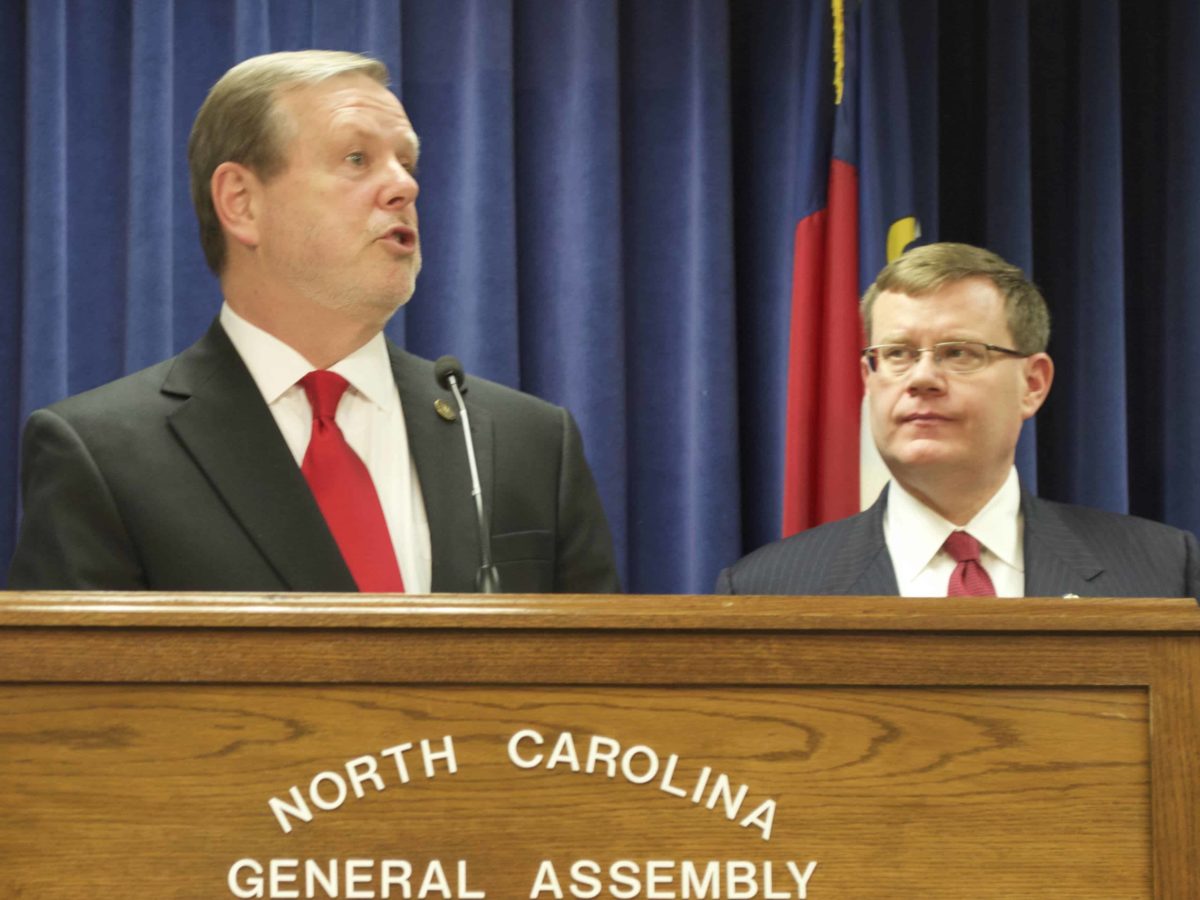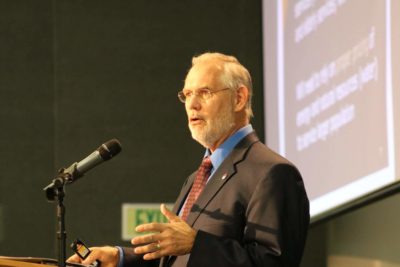
Preamble: The great debate over the future of preK-12 education in North Carolina does not take place in an isolated, walled-off arena, but rather in the roiling waters of contemporary American politics. People, events, and situations that may not seem directly relevant have a bearing on education policymaking in states and communities. In today’s America, all politics is not local. Here, then, is an analysis of the Republican Party context; next week, scrutiny of the Democratic Party.
Consider: A rollicking race for the 2016 Republican presidential nomination, with polls showing two unorthodox candidates, Donald Trump and Ben Carson, having the combined support of nearly half of GOP voters. The resignation of U.S. House Speaker John Boehner setting in motion a faction-laden search for a successor.
Consider, too: A contentious process for selecting a president of the University of North Carolina system that saw Republicans legislators clashing with members of the Board of Governors that GOP lawmakers selected. An over-time session of the North Carolina General Assembly that often pitted House Republicans against Senate Republicans.
There is a significant difference, of course, between national Republicans and North Carolina Republicans. In Washington, GOP lawmakers must contend with a Democratic president, and the Republican fractiousness contributes to episodes of stalemate and threats to shut down the federal government. Raleigh, however, is a no-stalemate zone, with Republicans in control of all three branches of state government, and with a veto-proof legislative majority practically shutting out Democrats and at times overriding the Republican governor.
The Republican Party that rules in Raleigh, and nearly all of the South, is the product of an evolution in state and national politics over the past 50 years. In North Carolina and the region where the party dominates, the GOP still bears the imprint of the “Southern strategy’’ that emerged in the 1960s.
In the 1968 presidential election, Republican Richard Nixon defeated his Democratic opponent Hubert Humphrey by less than a percentage point in the popular vote, with Alabama Gov. George Wallace, a segregationist running as an anti-Washington independent, winning five states and capturing more than 13 percent of the national vote. Through the “Southern strategy,” an anxious Nixon set out to win over Wallace voters and blue-collar voters generally. Watergate disposed of Nixon, but the strategy came to fruition under Ronald Reagan.
The Reagan coalition, passed on to both presidents named George Bush, consisted of three interlocking parts: white Southerners who switched to the Republican Party as the Democratic Party advocated for civil rights and an aggressive education-health-social services agenda; an energized cohort of conservative Christians; and a robust class of professionals and corporate managers attuned to free-enterprise Republicanism.
More recently, the party has gained propulsion, and a measure of divisiveness, from the Tea Party movement. The Republican rightward-leaning coalition is sweeping enough to foster personal rivalries and factional fighting of issues and style.
The Nixon landslide of 1972 propelled Jesse Helms into the Senate and Jim Holshouser into the governor’s office, and the Reagan landslide of 1984 sustained Helms in the Senate, and helped Jim Martin win the governorship. North Carolina Republicans gained a share of power in the legislature in 1994, as Newt Gingrich was leading the GOP to a U.S. House majority.
In 2010, North Carolina Republicans, led by Thom Tillis who became state House Speaker and Phil Berger who became Senate president pro tem, seized legislative power. They did so with a potent campaign that out-matched Democrats unprepared for the electoral wave created by the deep recession and by voters expressing discontent with the early months of the Obama administration. Republicans used their newly won advantage in drawing congressional and legislative districts in an attempt to embed their majority for a decade or more.
As 2016 approaches, Republicans once again have illustrated the interplay of national and state politics. They have moved the presidential primary to mid-March, in an effort to give North Carolina Republican voters more influence nationally – while they have also scheduled state primaries on the same date so that voters drawn to the presidential races will have more influence on their own legislative contests.
“Over the past four years, what we’ve seen in North Carolina is a complete change in the direction of our state,” Senator Berger said in an interview with WUNC radio last week. Berger spoke in terms of balancing the state’s budget – though both Republicans and Democrats would agree that North Carolina government has experienced sharp changes in direction on all manner of issues, not the least public education. The Republican majority has enacted a grading scheme that actually tells more about the socio-economic composition of a school than its educational quality; it has imposed a reading requirement for third graders; it has appropriated public funds for lower-income students to attend private schools; it has acted to expand charter schools; and it has provided relatively modest pay increases for teachers even as it has enacted a series of tax cuts.
In Washington, a cohort of Republicans has challenged the basic premises of governance, seeming to prefer shut-down to compromise. On the campaign trail, Trump appeals to Republican blue-collar voters, echoing Nixon in appealing to a disenchanted “silent majority.’’ In Raleigh, Republicans have characterized aspects of state government as broken, have shown a preference for privatization and tax cutting, and sought to undo or reverse the ways and means of previous Democratic governance.
Of course, American politics runs in cycles. The GOP’s current dominance will wane. Indeed, the North Carolina GOP often appears a party in a hurry to enact its agenda before demographic, social, and economic changes reconfigure the state’s political landscape.
Recommended reading



